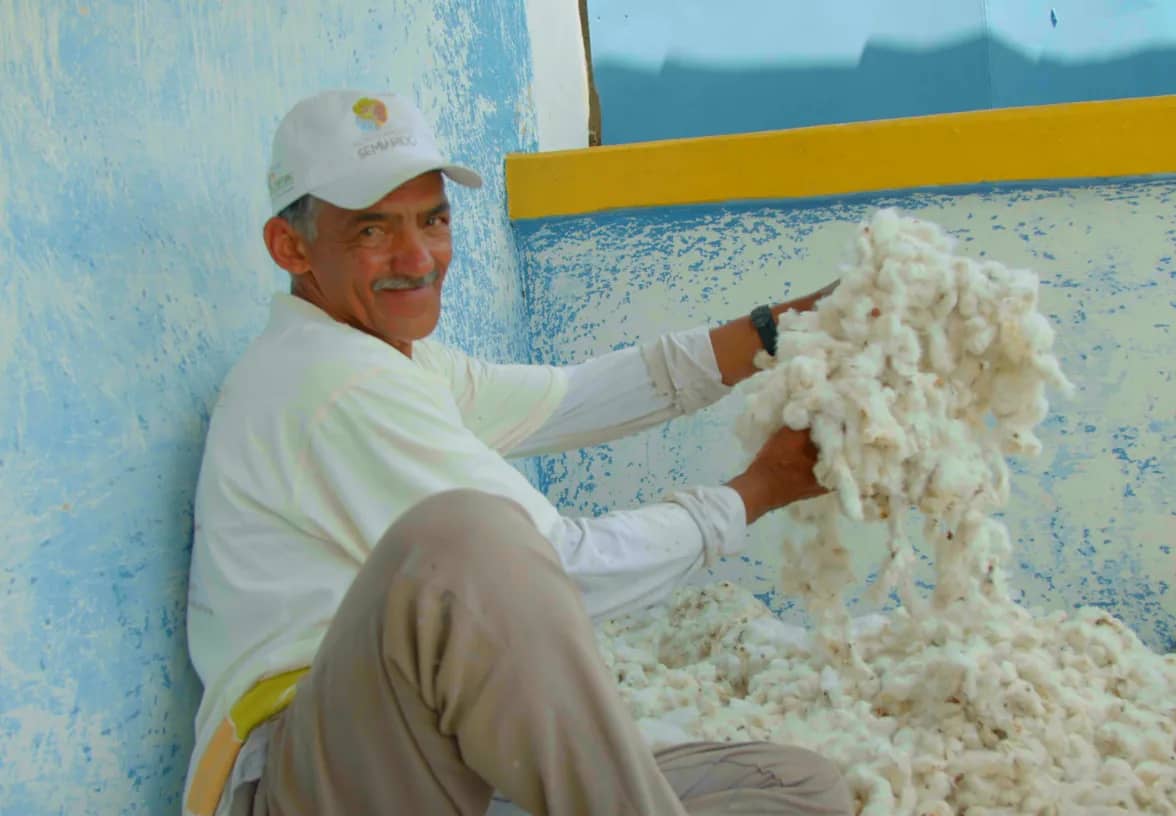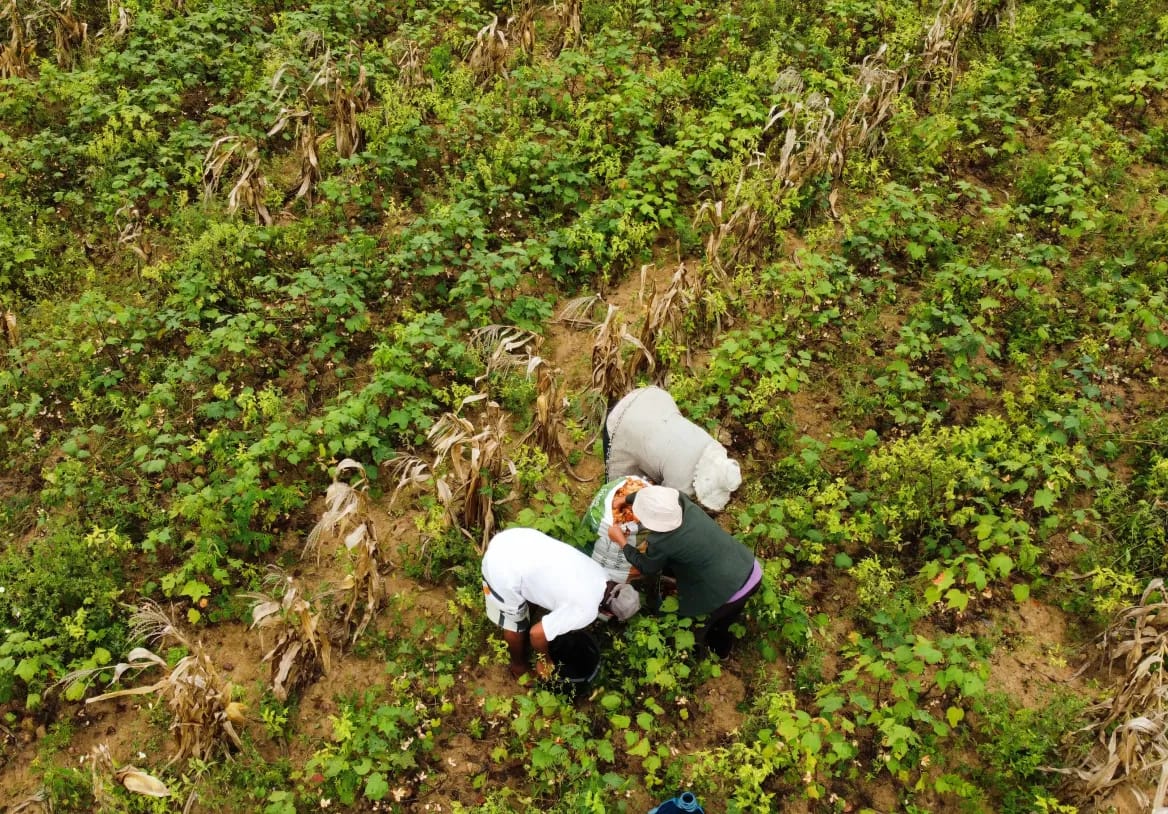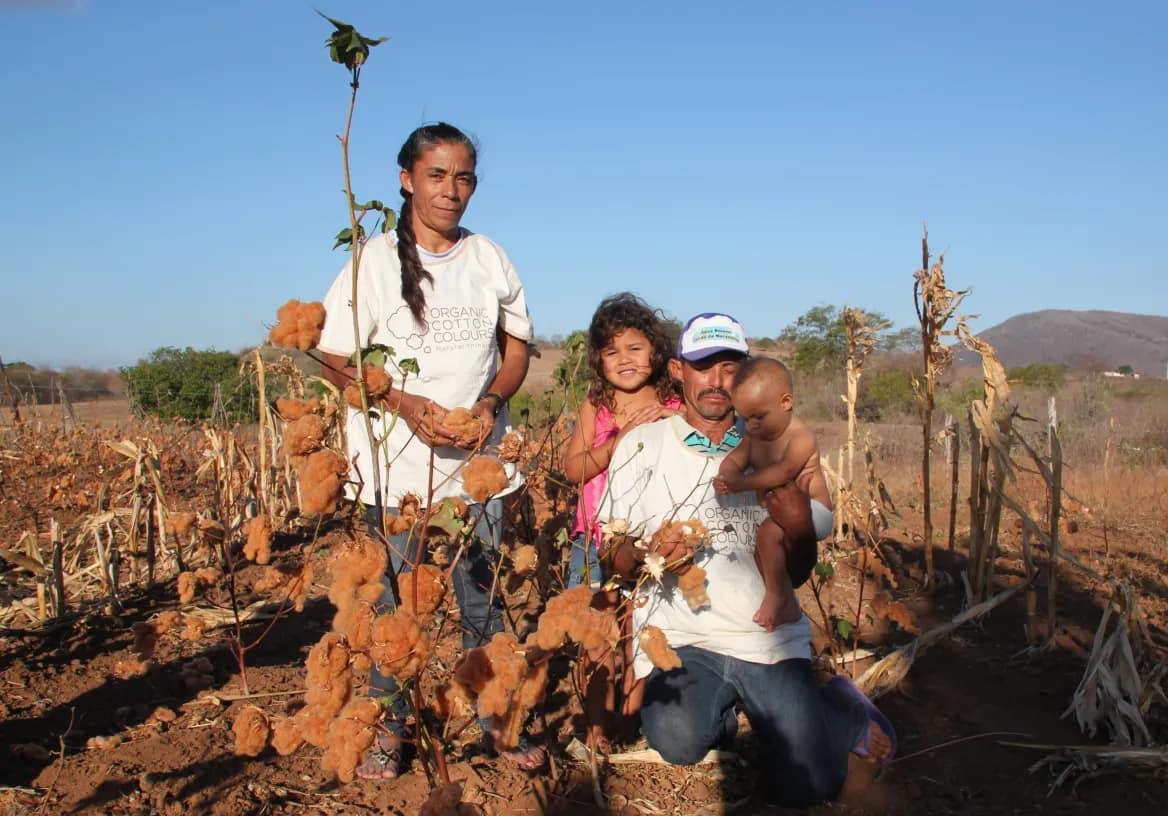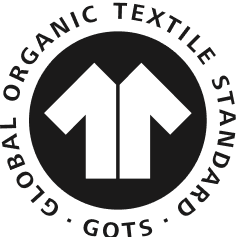Brazilian cotton from our own Family Farming and Agroecological Consortia cultivation project, where we recover local varieties of Naturally Colourgrown Cotton from the seed, with agricultural practices that naturally enrich the soil and result in a positive impact for people and the environment.
We grow the world we want
In 2013, we discovered a project in the northeast of Brazil that various NGOs and government entities were promoting to recover the cultivation of native varieties of naturally coloured cotton from the seed, based on Family Farming and applying traditional agroregenerative cultivation methods.
Encountering a project that fully reflected the DNA of our company's beliefs and values sparked an unstoppable desire to advance our own community of farming families and achieve our mission: today, the OCCGuarantee Brazil project ensures the economic stability of more than 200 small farmers and their families, improves soil quality by promoting biodiversity with each harvest, and allows us to obtain the cotton we desire for people and the planet.
These are the 6 pillars of our project

We ensure the cotton's chain of custody from its origin to guarantee the maximum purity and ethics of our OCC textiles.
OCC was founded in 1992 to provide textile solutions for individuals affected by various conditions and skin sensitivities. Thanks to the purity of our toxin-free and chemical-free cotton, we ensure garments that are entirely harmless to people’s health.
The Brazil Project was a natural step to ensure the purity of our products from the very source, cultivating our own organic and regenerative cotton.
In this way, we supervise 100% of the sustainability and ethics involved in our activity, from the cultivation and harvest of cotton fibre to its transformation into clothing pieces. As a result of this commitment to transparency, we created our own guarantee seal: OCCGuarantee®, from seed to garment.
We promote organic and regenerative cultivation with the Agro ecological Consortia model.
Cultivation in Agro ecological Consortia is based on the combination and coexistence of various food crops with cotton cultivation, using agro regenerative farming techniques, without chemicals, with natural rain irrigation, and promoting the natural enrichment of soil quality.
Each landowner cultivates up to 3 or 4 different types of food throughout the year for self-consumption and small-scale commerce, and all food production receives ‘participatory organic certification.’
The cotton season begins in the months of April and May with seed planting and concludes in September with the harvest of the cotton bolls.


We advocate for a self-sustainable model of Family Farming.
At its core, we find the family farmers who are part of the Social Project in Brazil; they are the true stakeholders in our company. Possessing the necessary expertise and receiving proper training, they provide us with naturally coloured organic cotton cultivated under agro regenerative farming practices.
We exclusively involve families of smallholder farmers who own their own plots of land, generally not exceeding 1 hectare, in the project.
The Family Farming model combines the cultivation of various foods for self-consumption, with cotton cultivation to supplement family income with a fair compensation.
Fair remuneration and a commitment to acquiring 100% of the production.
We enter into indefinite annual contracts with farmers, ensuring economic stability for all the families involved in the Project.
We provide cotton seeds free of charge and finance each harvest by paying in advance for the projected production of each farmer.
10% of the value we pay annually for the cotton is reinvested in improvements in the community’s production system.
Our commitment to the project involves gradually and steadily increasing the number of families participating, collectively nurturing a progressively robust circular economy.


We promote the recovery of local varieties of Naturally Colorgrown Cotton from the seed.
We cultivate naturally coloured organic cotton in the various tones that emerge from the seed: ecru, green, and brown shades, just as they naturally grew over 5000 years ago. These varieties were forgotten for decades due to the rise of the Industrial Revolution and the need for intensive production of white cotton for dyeing through chemical harmful processes.
We finance seed multiplication fields to provide them free of charge to farming families.
Coloured cotton varieties have much lower productivity than conventional raw cotton, but we incentivize their cultivation by paying a fair compensatory price.
We are part of local farming communities and enjoy the trust of government agencies.
We are members of the Instituto Casaca de Couro, which promotes agro ecological cultivation and the recovery of the local cotton processing industry. In 2023, the Institute acquired and reopened the Cotton Processing Factory Antônio Inácio da Silva, a ginning unit that, after more than 30 years of closure, is once again serving 1,500 producer families and providing employment to the local population.
We collaborate closely with EMBRAPA (Brazilian Agricultural Research Corporation), SEBRAE (Brazilian Micro and Small Business Support Service), and the NGO DIACONIA to provide our farmers with all the necessary technical support to recover local cotton varieties, improve agro regenerative agricultural practices, and enhance their Family Farming business model.

Where is our project located?

Discover the history of the Brazil project in 6 chapters

Chapter 1
Defining the project for our own cotton
After 20 years of marketing FoxFibre Colorganic products, Sally Fox expressed concerns that she couldn’t guarantee the supply of all the cotton we wanted. Additionally, the manufacturing in Portugal also didn’t assure continuity. All of this forced us to make strategic changes and consider obtaining our own organic cotton at the source to stay true to what made sense to us: being part of a circular economy where everyone wins, where other brands can also be part of the project, making it sustainable over time.
“Sometimes everything is as simple as pausing to become aware of your inner voice. And when you have the feeling that what you’re doing is well done, nothing else is needed.”
Santi Mallorquí Gou, CEO.

Chapter 2
Exploring the Origin: India
Opacity in negotiations for obtaining our organic cotton in India seemed like a significant hurdle, but it actually concealed the great opportunity to shed more light on how the project would unfold and paved the way for OCCGuarantee: we needed direct access to the cotton at its source by establishing a direct deal with the landowner, no intermediaries or affiliated companies.
“Moreover, we would discover that India could never be our future choice, given our firm commitment to working only with natural colours from the cotton plant, dispensing with the dyeing and finishing process.”
Santi Mallorquí Gou, CEO.

Chapter 3
Brazil, the great discovery
Brazil seemed like the country that met the requirements for obtaining naturally coloured organic cotton. Losing the first harvest due to a pest led us to another key conclusion: employing a regenerative method that combines the cultivation of more than one product would be a more sustainable and less risky option for farmers, making more sense for the project. Thus, the regenerative project OCCGuarantee Brazil was born!
“A cultivation where cotton is combined with food provides the opportunity to support families and livestock with food, and generate stable additional income by selling the surplus.”
Santi Mallorquí Gou, CEO.

Chapter 4
Diogenes, the missing piece
The new OCC formula had to make farmers our ‘stakeholders’ in the field. The goal was to create a circular economy business where, in addition to generating profitable activity, those participating would see improvements in their social, economic, and working conditions. And where the region would see environmental conditions preserved. Diogenes Fernandes, son of farmers and a member of a local NGO, was the key piece to create our own community of farmers.
“However, I still felt lost about how to manage the project from a distance. I knew the success of the project relied on having someone in Brazil actively involved in the group’s development.”
Santi Mallorquí Gou, CEO.

Chapter 5
Ensuring the linted seed
Ensuring good linted seeds was vital. Cotton seeds are usually sold without fuzz as they are considered ‘cleaner’. However, using aggressive chemical agents to remove the fuzz around the seed can damage them. Obtaining a sufficient supply of linted seeds in our three colours was a significant challenge.
The other major challenge was being able to visit all the farming families and establish contracts that guaranteed we would work with them each year, purchasing all the cotton they produced.
“Personally visiting all the families at their homes is the most beautiful experience I’ve had in this entire project.”
Santi Mallorquí Gou, CEO.

Chapter 6
Heading to the first export
In January 2015, we obtained cotton fibres from our own network of farmers in sufficient quantity for export and spinning in Barcelona. Proper cargo planning was crucial to optimize transport costs. We realized it was essential to have our own subsidiary registered in Brazil that could operate to simplify the documentation and hiring processes we needed in the country.
“Only by combining everyone’s efforts can we make this project sustainable and increase the number of farming families involved, while providing the market with the highest quality natural fibre.”
Santi Mallorquí Gou, CEO.
Natural colours from the seed
The Naturally Colorgrown Cotton from the seed we produce in Brazil is of the Upland type, from native varieties such as Branco Aroeira, Mocó, BRS Rubí, and BRS Verde, which provide fibres in various shades of ecru, green, and reddish-brown.
This naturally coloured cotton has been growing wild for over 5,000 years in different shades and varieties in various locations in South America and Asia, where archaeological evidence has been found.
It was with the industrial revolution and the discovery of chemical dyes in 1856 that the textile industry promoted the conventional and mass cultivation of white cotton for dyeing, abandoning the traditional cultivation of naturally coloured varieties that had been practiced since time immemorial.
Wearing the colours that nature offers
We are very proud to have recovered these varieties of naturally coloured cotton, as carefully combined in the thread production, they allow us to create fabrics with a harmonious and varied palette of natural greens and browns, avoiding the chemical processes involved in industrial dyeing of cotton thread or fabric.
We have discovered the true meaning of “vibrant colour“. Our fabrics not only retain their natural colour but also enhance it with each wash. All of this makes clothing pieces made with these cottons very special, free of harmful chemicals and healthy for the skin, natural, unique, and aging gracefully.



Our Brazilian cotton OCCRegeneartive® Brazil holds recognized official certifications for both organic and regenerative practices.

Organico Brasil in transition 2024

USDA Organic in transition 2024

Eu Organic in transition 2024

Regenagri in transition 2025
Do you want to know more about what we can offer you?





